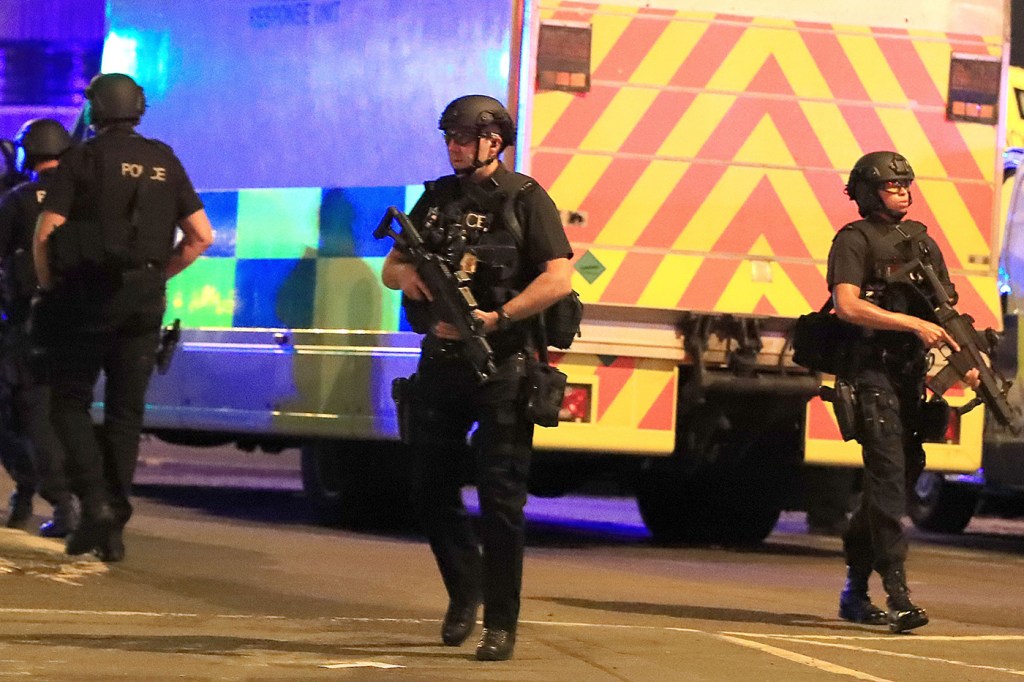Securing large crowds a ‘vexing problem’

Late Monday, an explosion at the end of an Ariana Grande concert at Manchester Arena in England killed 22 people and injured dozens more. The New York Times reported Tuesday that British authorities had identified the bomber who carried out the attack; the deadliest in Britain since 2005.

Attacks of this sort often raise the question, ‘How did this happen?’ We asked Carey Rappaport, Distinguished Professor in the College of Engineering and an expert in security, sensing, and surveillance systems, just that. Rappaport is deputy director of the Awareness and Localization of Explosive-Related Threats, or ALERT Center, a multidisciplinary and multi-university-led organization whose research is helping to improve the detection, mitigation, and response to explosive-related threats worldwide. The ALERT Center was also designated a Center of Excellence by the federal Department of Homeland Security.
Protecting thousands of people in a large public space without infringing on their privacy rights is “a vexing problem,” Rappaport said. Indeed, even with a “dream” security device in place, there are still challenges.
What are some of the challenges authorities face trying to secure large venues?
Security in these large public places is a real challenge. England in particular has lots of surveillance systems in place already—they’ll watch people in downtown London much more than we watch people in cities in the U.S. It’s almost too much to watch, though. It’s hard to make a determination about whether something is unusual or if someone is nefarious or bent on being destructive. Using video analytics to see if someone is acting differently from other people walking by is imperfect.
In this instance, you also had people leaving the arena and getting to the train station—those are people going from one secure area to another, but how do you protect those people when they’re out in public?
When considering security measures, there are privacy issues that have to be worked out, as well. We don’t want to turn the whole world into a surveillance state. Indeed, it’s a vexing problem.
What might be the ideal security measures to have in place?
The dream device, so to speak, at this point, is a hallway detector system, wherein pedestrians would walk between a pair of detection panels. The sensing and processing would occur fast enough that the person wouldn’t have to stop to take off their jacket or empty their pockets, they wouldn’t even have to break their stride. A combination of advanced interpretation algorithms and efficient scanning and computation would all have to work together to provide alerts of unusual concealed items.
Even in this scenario, however, you need people to make the final decision to pull someone aside and determine the risk. It would also be difficult to implement in a venue where there are thousands of people pushing through the doors at the same time, like you might have at a large arena.
Currently, metal detectors will detect handguns, machetes, or pocket knives, things of this nature. They won’t detect an explosive. Meanwhile, security personnel are trying to keep the peace and keep pace with 10,000 people streaming in and out of a venue. It’s extremely difficult to discern shady people, even with the best security.
What do you make of the target—in this case, a pop music concert?
This was a performance for teenagers and children—it wasn’t a political rally, it wasn’t even something where you have two sides, like a sporting event. For someone to cause this much carnage just shows that nothing is immune to these situations.
It hurts when someone goes after children. Unfortunately, in a world where things are a lot less safe than they perhaps used to be, it’s not a matter of just throwing money at a problem; at its most basic level, this is knowing who your neighbor is, and what he or she is willing to do.





